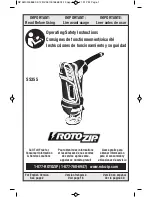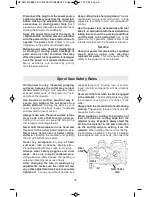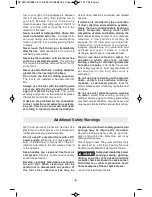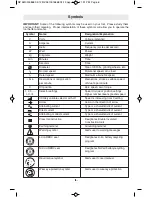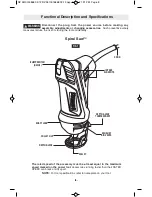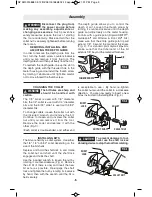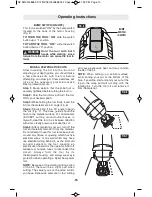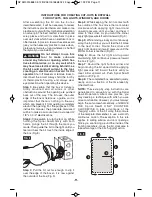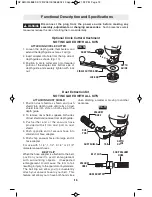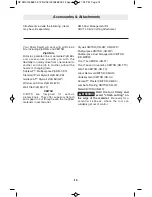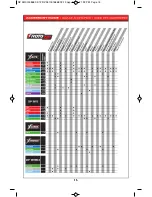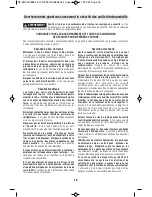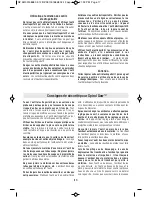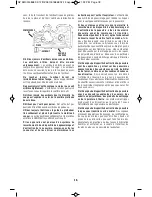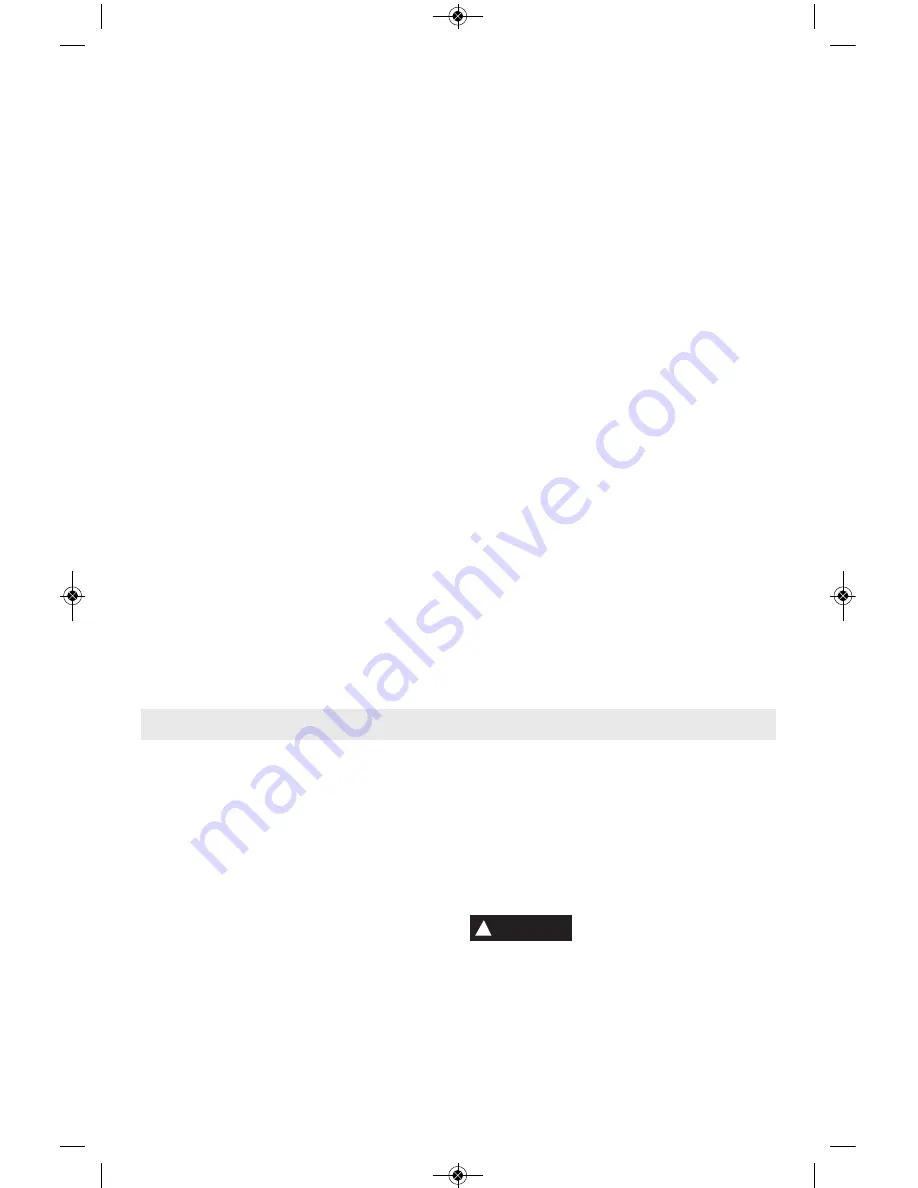
-4-
tool to your right. If the workpiece is between
the tool and your body, then feed the tool to
your left. Feeding the tool in the wrong
direction causes the cutting edge of the bit to
climb out of the work and pull the tool in the
direction of this feed.
Never use dull or damaged bits. Sharp bits
must be handled with care. Damaged bits
can snap during use. Dull bits require more
force to push the tool, possibly causing the bit
to break.
Never touch the bit during or immediately
after the use. After use the bit is too hot to be
touched by bare hands.
Never lay the tool down until the motor has
come to a complete standstill. The spinning
bit can grab the surface and pull the tool out of
your control.
Never use bits that have a cutting diameter
greater than the opening in the base.
Do not use the tool for drilling purposes.
This tool is not intended to be used with drill
bits.
Always use the tool with the depth guide
securely attached and positioned flat
against material being cut. The guide
securely positioned on the material improves
the stability and control of your tool.
If devices are provided for the connection
to dust collection and extraction systems,
be sure these are connected and used
according to tool and vacuum instructions.
Use of dust collection can reduce dust related
hazards.
If devices are provided for the connection
of dust collection and extraction systems,
empty the dust container before beginning
work, frequently during work, after
completion of work, and before storing the
tool. Be extremely careful of dust disposal,
materials in fine particles form may be
explosive. Do not throw dust on an open fire.
Combustion from mixture of varnishes,
lacquers, polyurethane, oil or water with dust
particles can occur if there is a static
discharge, electric spark, or excessive heat.
Do not use dust extraction where for
operations where dust may include
burning, smoking or smoldering items like
hot ashes or sparks. Fire inside the vacuum
tank or bag may occur. Dust may smolder and
set vacuum on fire long after work is
completed.
Do not use dust extraction with explosive
dusts, varnish, polyurethane coatings,
cleaners, or oil-based paints. Electric
motors create sparks which may ignite the dust
or fumes.
Do not use dust extraction when working
on metal. Swarf from sanding, grinding or
cutting metal may be hot and may spark which
may melt, plastic adaptors, vacuum hoses and
may cause a fire inside the vacuum tank or bag.
Additional Safety Warnings
GFCI and personal protection devices like
electrician’s rubber gloves and footwear will
further enhance your personal safety.
Do not use AC only rated tools with a DC
power supply. While the tool may appear to
work, the electrical components of the AC
rated tool are likely to fail and create a hazard
to the operator.
Keep handles dry, clean and free from oil
and grease. Slippery hands cannot safely
control the power tool.
Develop a periodic maintenance schedule
for your tool. When cleaning a tool be
careful not to disassemble any portion of
the tool since internal wires may be
misplaced or pinched or safety guard return
springs may be improperly mounted.
Certain cleaning agents such as gasoline,
carbon tetrachloride, ammonia, etc. may
damage plastic parts.
Risk of injury to user. The power cord must only
be serviced by a Rotozip Factory Service
Center or Autho rized Rotozip Service Station.
Some dust created by power
sanding, sawing, grinding,
drilling, and other construction activities
contains chemicals known to cause cancer,
birth defects or other reproductive harm.
Some examples of these chemicals are:
• Lead from lead-based paints,
!
WARNING
RZ 2610015858 02-12:RZ 2610015858 02-12.qxp 1/25/12 1:31 PM Page 4

